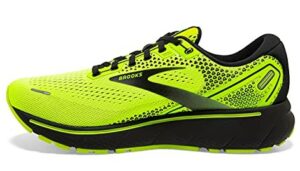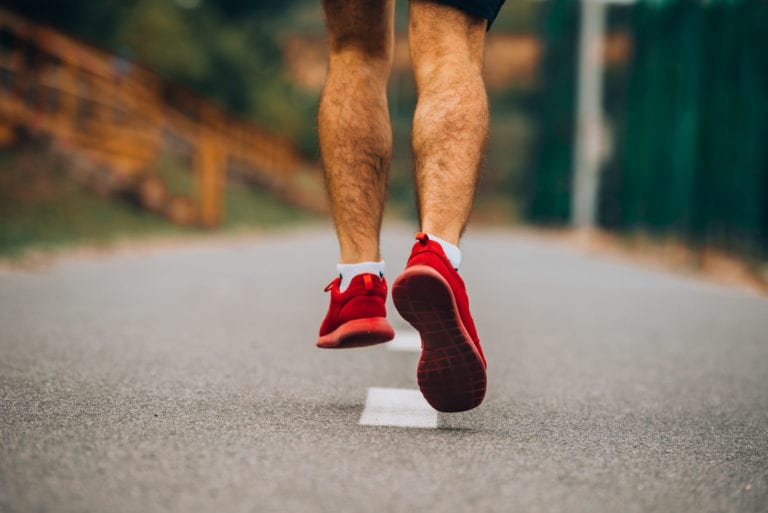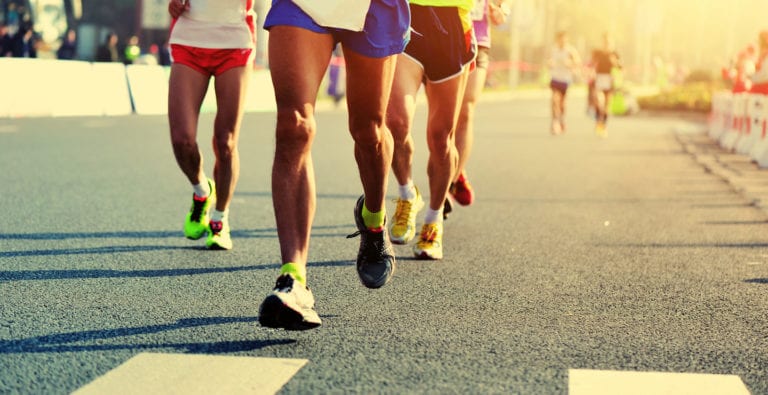Running on an empty stomach – or “fasted running” – has become a popular hack for losing weight and burning fat. This is because of the general concept that running on empty will lead to the body burning fat for energy, consequently helping you get leaner quicker and teaching your metabolism to use a different source of fueling.
There are pros and cons to fasted cardio.
On the one hand, if you’re running for weight loss on an empty stomach, there is a tendency to burn fat and potentially “teach” your body to deal with a reduced energy intake. On the other hand, some studies show that fasted cardio is detrimental to long-term weight loss and doesn’t support all types of running workouts.
It’s important to know the benefits and drawbacks of this form of exercise and be able to choose what works best for you. This is why, in this article, we’ll analyze both the positives and the negatives of fasted cardio, to enable you to make the most appropriate choice of how to include this (or not) in your training plan.
What is Fasted Cardio?
The term “fasted” applies to any form of exercise you engage in from a fasted state, i.e. where you haven’t been eating recently. For most people, this means exercising first thing in the morning, where typically you’ll have had a meal around 6 to 8 hours earlier.
Running on an empty stomach means that your
glycogen levels will be low so your body’s primary source of energy is at its lowest. As a result, the theory suggests that your body will be looking to find energy elsewhere. Most often, this means your fat stores. Consequently, fasted exercise is deemed to boost your fat metabolism and help you lose weight. However, there are reasons why it could be dangerous for some people and why it might even hinder your progress towards a fitness goal. And, ultimately, the science doesn’t entirely back up the claims.
Four Potential Benefits of Fasted Running
Overall, there are no unanimous research findings to suggest that the energy expenditure involved in fasted cardio will always result in weight and fat loss. Studies have proven some significant changes, on which the following benefits are based.
Fat-Burning Benefits
As carbohydrate stores are low when you train in a fasted state, the theory suggests that your body will use fat for fuel, therefore helping with fat burning or fat oxidation. Indeed, a
2015 study found that participants exercising before breakfast had increased fat oxidation. However, this was run on only 10 subjects, all male.
A female-only
study from 2017 found similar results, but again, from only 9 people. At the same time, there is evidence from a number of other scientific studies that eating breakfast causes more fat burn than the opposite. And there are also studies according to which there is no correlation between fasted cardio and fat burning.
In fact, there are also studies pointing to the fact that athletes who have had something to eat before exercising are able to
sustain an effort for longer, and therefore get better adaptations and more fat burning benefits.
Controlling Your Energy Intake
Fasted cardio is being used not just for lowering body fat percentage, but it’s also become a way for people looking to lose weight to control their food intake. Some studies have indicated that this could be possible, finding that fasted exercise was lowering the energy intake for over 24 hours for various groups studied.
This could be explained by the fact that the liver also stores glycogen, and a
2019 study suggested that it was the liver that was being affected by the fasted physical activity. The body taps into the liver glycogen stores when it can no longer rely on muscle and blood glycogen levels, and this in turn affects your intake of food through the liver-brain neural network.
Just like the connection between fasted cardio sessions and losing body fat, the link between how much people eat throughout the day and doing fasted exercise needs more study to be 100% conclusive.
Aerobic Endurance Benefits
There could be additional performance benefits linked to fasted training.
VO2 Max – your maximum oxygen uptake during intense physical activity – could increase as a result of using some fasted running sessions. This is another case of
a small study from 2010 which would need more work to become established, but it is the reason why some endurance runners, in particular, have included at least one fasted run session in their training regimes.
Impact On Digestion
Finally, regardless of body weight or fat loss goals, there is some evidence to suggest that running on an empty stomach could help those suffering from GI (gastrointestinal) distress. Especially in the case of prolonged exercise sessions such as endurance runs, athletes find that the right
Nutrition for runners is not enough to support them. On the contrary, long runs lead to issues such as cramps, nausea and vomiting.
For those prone to such levels of discomfort, a fasted run is an ideal way to get morning workouts done without dealing with painful problems. However, it’s important to note that these same athletes will still need to do aerobic workouts and high-intensity efforts with appropriate fuel stores, which means they’ll also train in a non-fasted state.
What are the Drawbacks of Running on an Empty Stomach?
For all the expected theoretical benefits of fasted cardio, the research is inconclusive as to whether this really is a good approach to losing weight and burning fat stores, or indeed to improve your performance levels. Moreover, there could be some serious drawbacks that make this not a great idea for just anyone.
Fasted Cardio Is Not Sustainable
Using fat for fuel is possible in limited sessions, but it’s not a sustainable source of energy for longer sessions or on a continued basis. You will still end up suffering from fatigue once you’ve been going for a little while. The training intensity and efficiency of your workout is also jeopardized by training in a fasted state. A
2019 study measuring workout efficiency of 20 male cyclists found that fasted exercise impacted their workout intensity and volume negatively.
This is why running coaches suggest doing fasted cardio for short periods of time, maximum 30-40 minutes, at low intensity. So, you could opt for a fasted run first thing in the morning for your recovery days.
Higher Injury Risk
Running on empty – or doing any other form of exercise for too long without fueling adequately – will lead to getting fatigued quicker. As the glycogen in muscles breaks down and your body draws on fat reserves, your brain will begin to struggle. After all, it needs glucose to function well and it will be competing with your muscles for it!
Being tired and slightly more prone to making careless mistakes can easily lead to injuries such as sprained ankles from running with less focus. Not paying enough energy to your environment can, of course, be dangerous, too. This is why an appropriate calorie intake before a run, coming from a small snack, is preferable to all-out fasted cardio from a safety and injury prevention perspective.
Possible Muscle Breakdown
Working out in a fasted state may be a good thing for training your body to adapt to having less energy, so it can be a good optional training run for someone doing endurance training. And, as we’ve seen already, fasted cardio can help burn fat. However, there are concerns around the impact this sort of training can have on your muscle tissue.
How does fasted running affect your muscle mass? Cortisol – a hormone produced by the adrenal glands – is at a high level in the early morning. So, if you’re running on an empty stomach first thing, you’re making your muscles work at a time when cortisol levels are high. At these levels, cortisol promotes protein breakdown in muscle cells. As a result, you could have a negative impact on your muscle mass by running in a fasted state in the mornings.
Other Risks
Studies conducted on subjects using fasted cardio as a weight loss tool for a period of time pointed to risks associated with dehydration or reduced renal function if appropriate levels of hydration aren’t maintained during the non fasted state (these side effects were associated with fasting athletes observing Ramadan, which includes abstinence from both food and water).
There is also a real risk for people with type 1 or type 2 diabetes, for whom exercising without eating can cause low blood sugar. Moreover, if taking diabetes medication like insulin, you can be more likely to develop exercise-induced
hypoglycemia.
Making the Right Choice For Your Fitness Goals
If you are looking to get fit and training for a specific race goal or fitness objective, trying to lose weight while preserving or increasing muscle mass, fasted cardio is not a good option because it can lead to muscle breakdown and it will not allow you to perform high-intensity cardio exercises. Moreover, endurance runners or athletes looking to prepare for longer events are not well served by fasted sessions, except in cases where they want to do a short, slow recovery session.
However, there could be some short-term fat burning benefits from fasted running, and it is certainly a form of exercise you can use mixed in with your other regular training regime. But use it sparingly as part of your
training running training plan and take into account the possible negative effects, checking with your doctor if you have any doubts about your health condition.


























